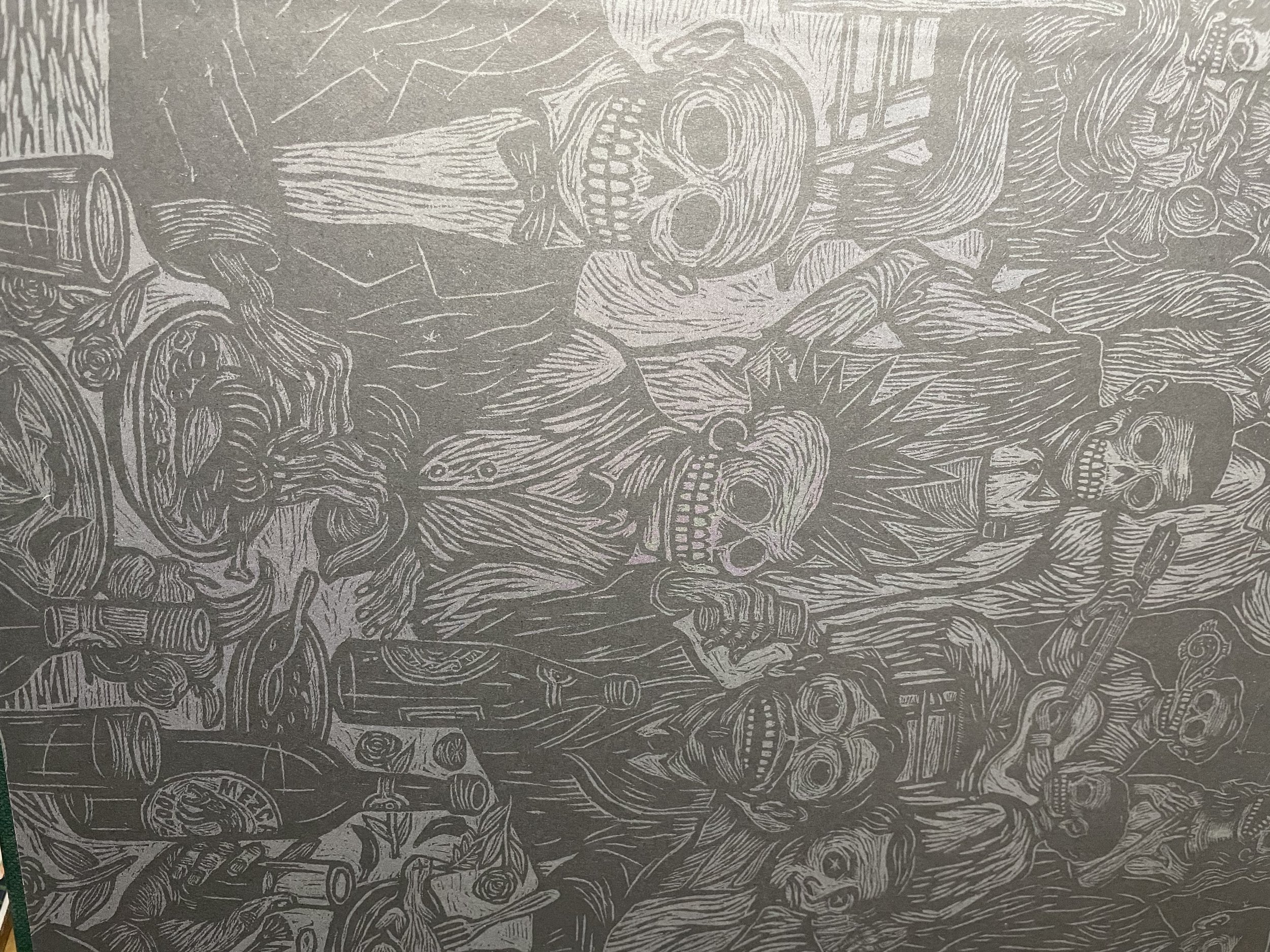Not Quite the End(papers)
The quest goes on…
When I started writing about Endpapers, two weeks ago, I was envisioning opening up all my books and being treated to a vista within the covers.
That didn’t happen. In fact, I was very lucky to find any endpapers at all. Where were all the Marble Waterfalls and Feathered Cascades? Even the arty books tended to have very plain pages, albeit in bright colours.
I knew that Zandra Rhodes and Matisse wouldn’t let me down, books I have of theirs’ were faithful to the endpaper necessity. Designs within other books, though, were few and far between.
I thought I had some old books- I do- I have some very old books- about Cezanne, and Van Gogh and The Art of Watercolour Painting. These books are so old they even have colour plates which have been stuck in by hand. But no sign of the endpapers that I craved.
I ransacked the shelves at Day-Job Towers but there was not much there either. I felt like Charlie Bucket looking for a golden ticket every time he opened a chocolate bar.
So, endpapers are rarer than I thought.
Of course, you can find them on the Internet but that feels like cheating. I want to open an actual book and have my heart filled with joy at the swirling panoply of muted colours gyrating across the introductory pages.
So, I will keep searching, and every time I find a good ‘un I will photograph it and put it on Substack and treasure it in my photo collection. I shall be very rude when I visit people’s houses and just start pulling their books straight off the shelves in search of the elusive decorations..
If you want to buy some readymade endpapers, then Etsy and Ebay are the places to go. If you just want to feast your eyes, then Pinterest has a comprehensive selection. (be warned, once you go on Pinterest you can never leave…)
How do you make your own endpapers? Tirzah Garwood made some marvellous examples, sumptuous enough for her to make a decent living from. In the wonderful book that I bought which accompanies the exhibition (Beyond Ravilious) at Dulwich Picture Gallery she gives away most of her secrets. The ingredients and methods are not easy to use though. Petrol, being one of them. You might end up designing your own end, never mind the endpapers. TG also used a large, flat-based tank perched on top of the washing machine, to hold the petrol and then simply splashed thinned oil paints over the surface and gave them a stir. If you do this a few times, drying your sheet of paper in between, you can build up layers. There’s no guarantee that they’ll be as exquisite as Tirzah’s though.
The safe, modern equivalent is to use shaving cream and poster paint, though I can’t imagine these being as long lasting, or as gorgeous, as the more lethal version.
How about trying a version with alum, liquid starch, gall and acrylic paint? (with what??) Alum = aluminum sulfate which you shouldn’t breathe in, and then gall which used to be an animal product but is now available in detergent form.
This all still sounds quite complicated and risky. I think I will try those ready-made bottles of marbling inks and see how I get on. I like the tip that you should use a mordant to make the design stick to the paper. That’s what alum is, a mordant.
Anything worth doing is never easy. That’s the message of the home-made endpapers!
Here are my found endpapers, which I’ve dug out over the last fortnight. I’ve partnered them with some print designs that I made which are based on abstract drawings of Southwark Cathedral, and put into a collection called Fantastic Ecclesiastic.
I hope you enjoy looking at these very varied endpapers, and when I find more I will post them!
Images from left to right, starting on the top row:
My design; Vogue Fashion by Linda Watson; Chinese Civilisation by Yong Yap; Illuminated by Melanie Sykes.
My design; Iconic by Zandra Rhodes; My design; My design
Monsters by Christopher Dell; The Day of the Dead by Dr Alderete; Larousse Encyclopaedia of Modern Art by Rene Huyghe.













